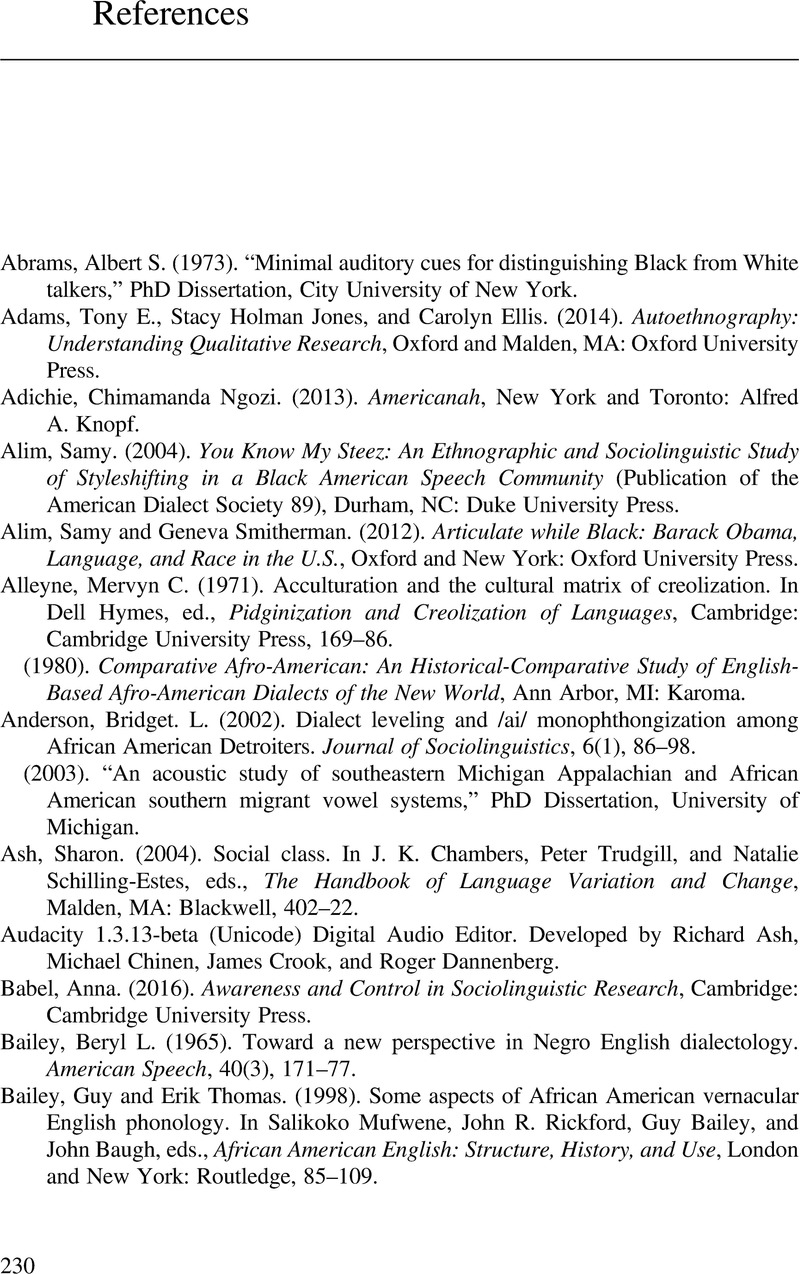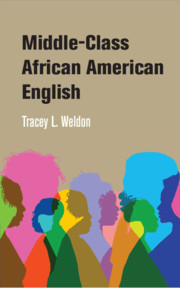Book contents
- Middle-Class African American English
- Middle-Class African American English
- Copyright page
- Dedication
- Epigraph
- Contents
- Figures
- Tables
- Acknowledgments
- 1 Introduction
- 2 The Study of Middle-Class African American English
- 3 “Talking Black” as Public Performance
- 4 Language and Double-Consciousness
- 5 Race, Class, and Camouflaged Divergence
- 6 Sounding Black
- 7 Looking Ahead
- References
- Index
- References
References
Published online by Cambridge University Press: 26 January 2021
- Middle-Class African American English
- Middle-Class African American English
- Copyright page
- Dedication
- Epigraph
- Contents
- Figures
- Tables
- Acknowledgments
- 1 Introduction
- 2 The Study of Middle-Class African American English
- 3 “Talking Black” as Public Performance
- 4 Language and Double-Consciousness
- 5 Race, Class, and Camouflaged Divergence
- 6 Sounding Black
- 7 Looking Ahead
- References
- Index
- References
Summary

- Type
- Chapter
- Information
- Middle-Class African American English , pp. 230 - 248Publisher: Cambridge University PressPrint publication year: 2021



